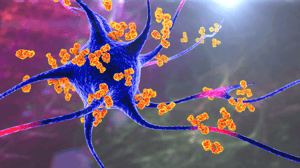Important tests conducted in the USA. A special type of vaccine pushes the cells of the immune system - which erroneously attack the organism's healthy tissues - to forget that reaction.
In the not too distant future, a very specific kind of vaccine could be available, called an “inverse” vaccine, to fight the autoimmune response that causes diseases like type 1 diabetes, multiple sclerosis and Crohn's disease.
While anti-viral and anti-bacterial vaccines act so that the immune system's cells retain the memory of the microorganisms they encounter (and respond every time that they appear), with inverse immunisation, the aim is to achieve the exact opposite.
Preventing autoimmune diseases
The ultimate aim is that the immune system's cells, which mistakenly attack the organism's healthy tissues, forget that response, and no longer see them as targets to attack. If this strategy were successful, the autoimmune reaction would disappear, with very positive and important repercussions for treatment.
The idea, described by a group of immunologists from the Pritzker School of Molecular Engineering at the University of Chicago (USA), is the evolution of a study that those same researchers have been developing for years, and the group has already demonstrated its potential for preventing autoimmune diseases. The new data, published in the scientific journal Nature Biomedical Engineering, for now taken from animal models only, demonstrate that the inverse vaccine can also be effective when the illness is already present, and can therefore be used to treat it.
An interrupter-molecule
To achieve this result, the researchers made use of a mechanism that already occurs in the organism, primarily in the liver; here, fragments of old or dying cells, and various other types of debris that could put the immune system on alert, are made harmless and “invisible” thanks to a molecule called N-acetylgalactosamine or pGal.
This molecule, when attached to fragments, tells the immune system not to attack those fragments, however anomalous they may be.
The researchers thus wondered if attaching pGal to the proteins of the tissues that trigger autoimmune reactions would produce the same type of result, i.e., inhibit the immune system.
Indeed, the trick worked: in the animal models of multiple sclerosis, an illness in which the autoimmune reaction attacks myelin (the protective coating around nerve fibres), the presence of pGal attached to myelin itself quickly led to the turning off of T lymphocytes, which normally mount the attack, with the gradually regaining of what had been lost and the partial recovery of the animals’ mobility. The same strategy also proved effective in other models of autoimmune diseases, again using pGal to mask the protein responsible.
Sperimentazione clinica in corso
It will take time before inverse vaccines are available for patients, but initial trials have already been conducted on people with coeliac disease, with encouraging results. And trials on people with multiple sclerosis are about to be launched.
If inverse vaccines could be developed for all autoimmune illnesses, it would be a real revolution, as we have said, because we would be able to switch off inappropriate reactions in a highly specific and definitive way; this would avoid the need to intervene on the whole immune system, as still happens today with drugs that act by dampening the entire natural defence system (triggering, however, a series of potential side effects).




